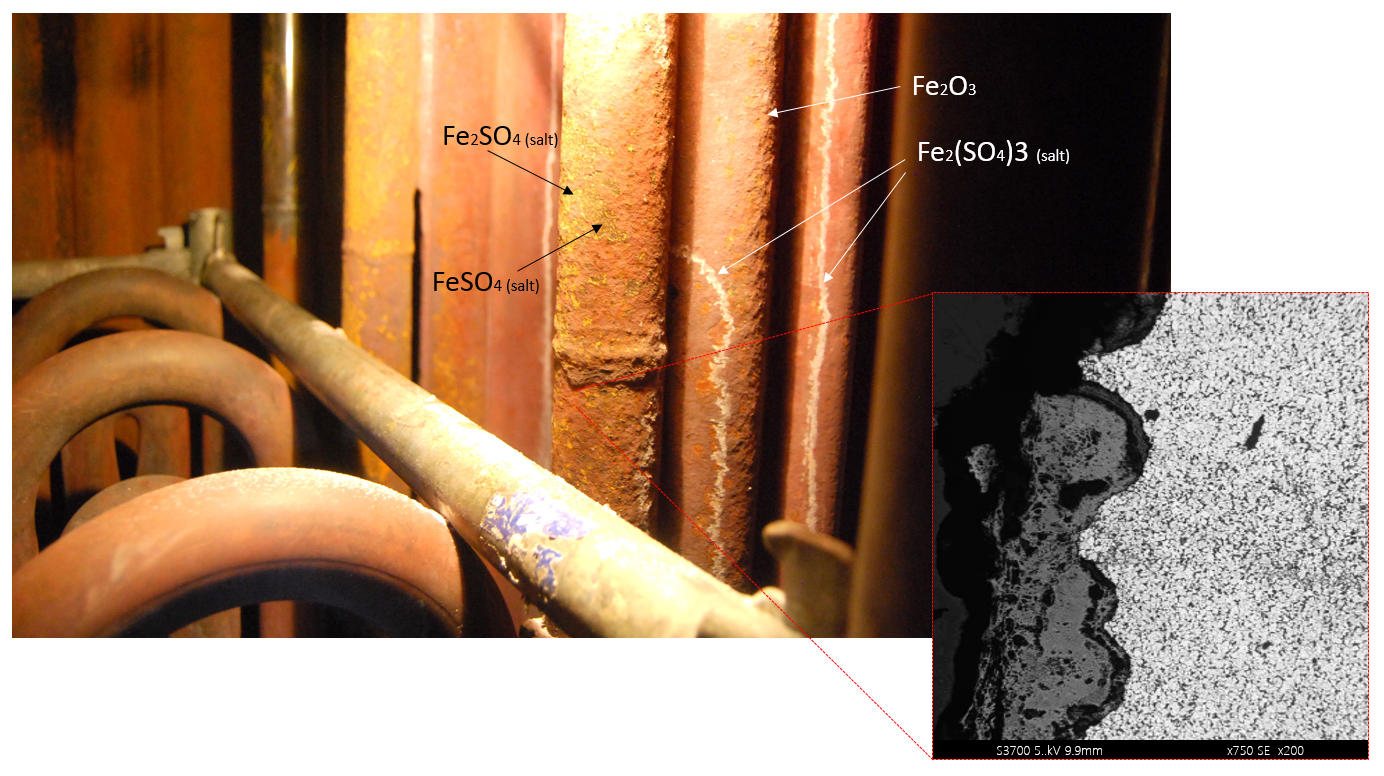Back-End Corrosion
Background
When sulphur is present in natural gas, the average content is generally around 0.01% and it comes in the form of hydrogen sulfide.
Problem
Even in small quantities, sulfides will react with atomic oxygen in the flame zone of the combustion chamber to be converted to sulphur dioxide and subsequently oxidized to a small extent of its trioxide structure, along with other products such as carbon dioxide and water vapor.
This reaction is favored by the presence of iron (III) oxide, acting as an effective catalyst for a more heterogeneous and extensive oxidation.
Eventually, sulfur trioxide will bond with moisture in the flue gas to form sulfuric acid which could lead to severe corrosion attack and irreversible damage in the boiler tubes.
Actions For Mitigation
The appearance of back-end corrosion is shown in this photo I took during an inspection conducted in a recovery boiler. The following actions were proposed to successfully mitigate and control the corrosion effects:
- Minimum tube wall temp ºC above dew point by controlling feed water flow
- Installation of a sensor for continuous DP monitoring
- Increase of deaerator pressure
- Installation of sacrificial shield deflectors
- Permit condensation in main critical cold zones by replacing existing material with chrome-nickel alloys.



